On the Road is a weekday feature spotlighting reader photo submissions.
From the exotic to the familiar, whether you’re traveling or in your own backyard, we would love to see the world through your eyes.
Winter Wren
Although I am mostly still a lurker here, I have mentioned in the discussion of a few of the nature related posts about our family’s love of the Orlando Wetlands Park in Christmas, Florida. So, I thought I would submit some photos of visits we have had so far this year (we are part-time snowbirds). If you are ever in the area and want to have a Florida nature experience, then this is a great place to visit.
The wetlands themselves are a set of impoundments which are the final stage of a sewage water treatment process. Many local governments have set up similar wetlands and allow public access to them (there is another called the Viera Wetlands that is closer to where we stay when in Florida. It is also very nice and quite popular, but is currently closed for environmental improvement – funded by the American Rescue Plan Act – thanks Biden!). Of course, there are lots of wading birds and alligators, but you can also sometimes glimpse otters, raccoons, bobcats and even this past year a black bear.
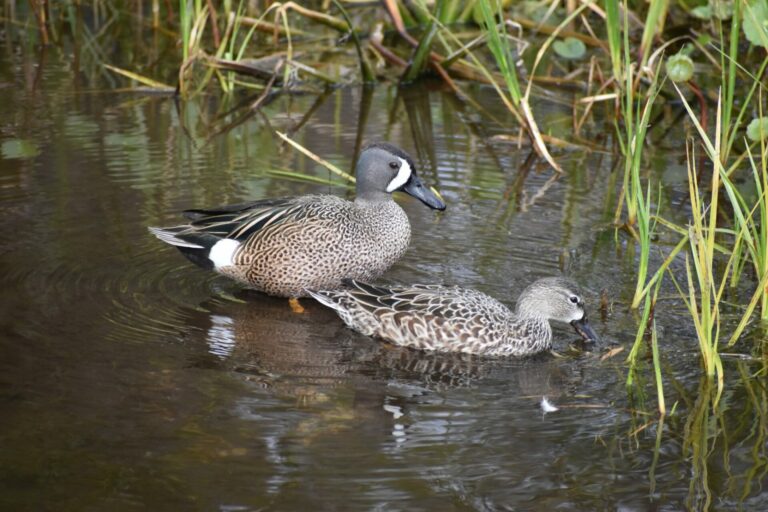
Blue winged teal are the predominant wintering duck species at the wetlands and the ducks are generally paired up when they are seen. Here is a handsome male and its (assumed) mate. My wife often makes fun of how birds are often poorly named based on their colors or other characteristics. So of course she questioned why these ducks are called blue winged teal.
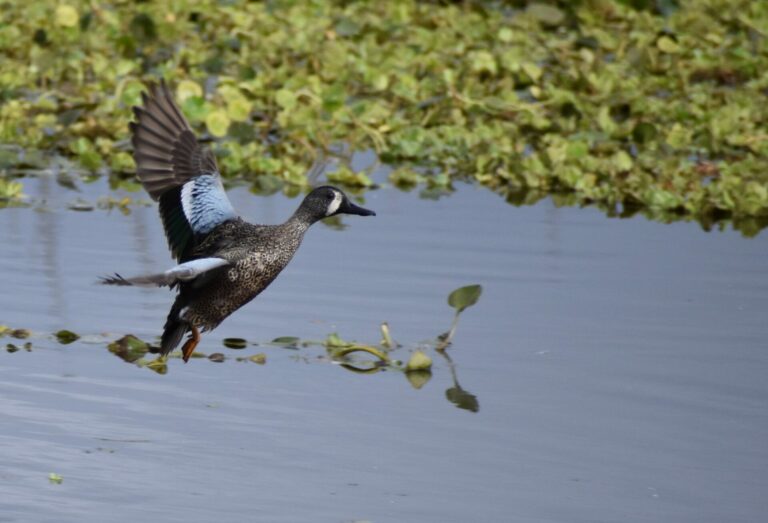
This is why.
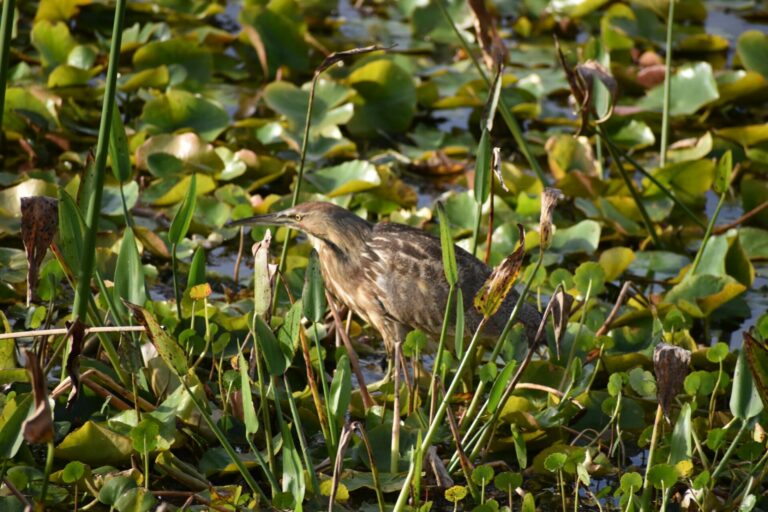
My wife and I like to both walk the wetlands (especially the boardwalk that passes by a very active rookery) and also bike around parts of the perimeter when the weather is cool. We almost missed this American Bittern as we biked past – they blend in very well with their coloration and also keep relatively still when hunting.
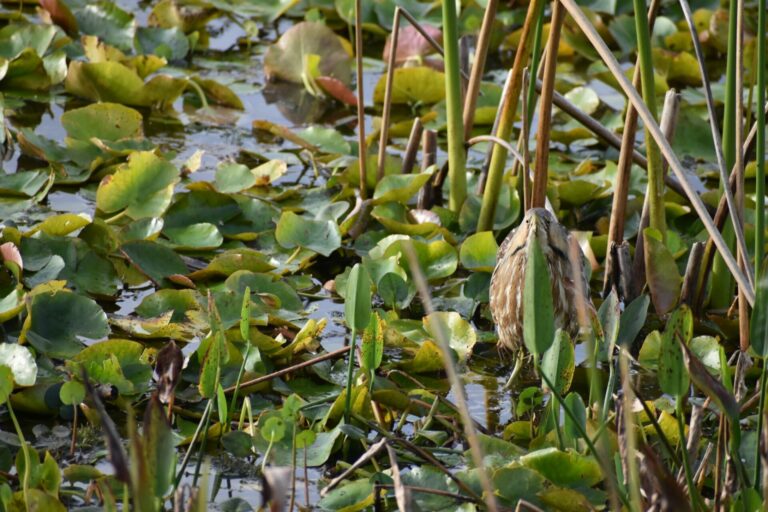
When an American Bittern thinks it has been seen, it will orient itself toward the viewer like this and freeze to further disguise itself. We quickly got back on our bikes to leave it in peace when it did this.
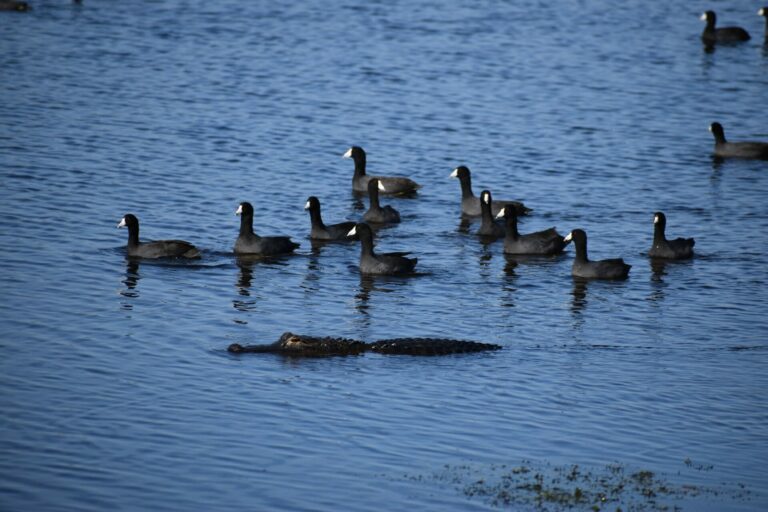
American coots winter in large numbers here (insert obligatory joke here about that also being true of the human variety of “old coots”). Their gallinule cousins are resident year-round. This flock kept a safe distance from an alligator passing through. A different day, I captured a video of a flock of coots lining up to fly one-by-one over a patch of open water, their feet just barely touching the surface as they flew. Unwary coots and gallinules do often become meals for the alligators (as well as eagles), so the caution is warranted.
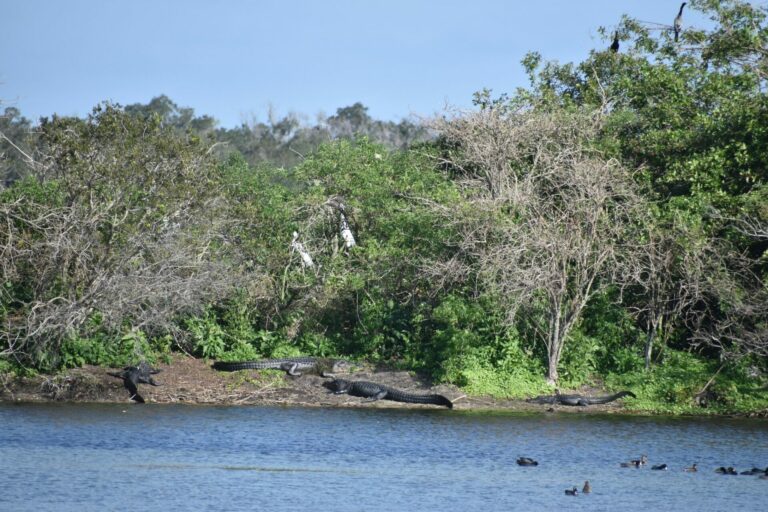
This being Florida, alligators of all sizes are present in the various ponds and marshes and can be seen basking or swimming. Swimming by humans is of course illegal (as well as being ill-advised judging by the sizes of these basking behemoths).
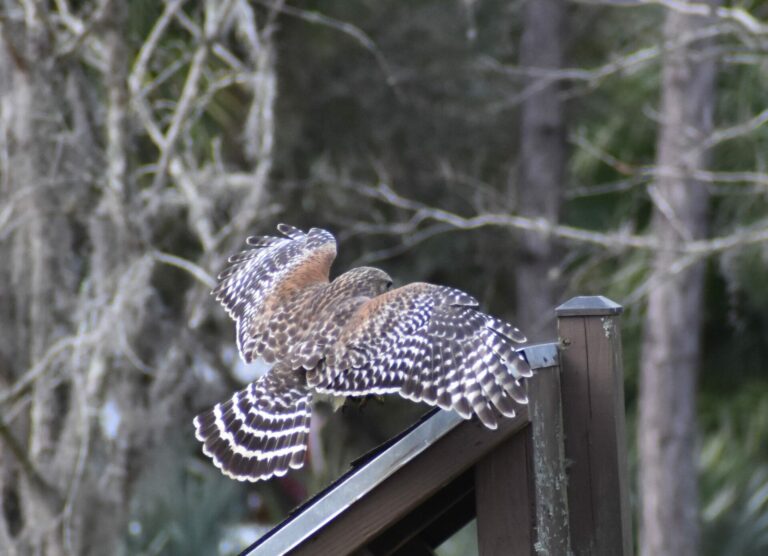
I was able to capture this Red shouldered hawk as it came in for a landing. Red shouldered hawks are common year round as are Ospreys. Eagles can be seen in the winter and caracara’s year round if you are lucky (I have only seen them in Viera).
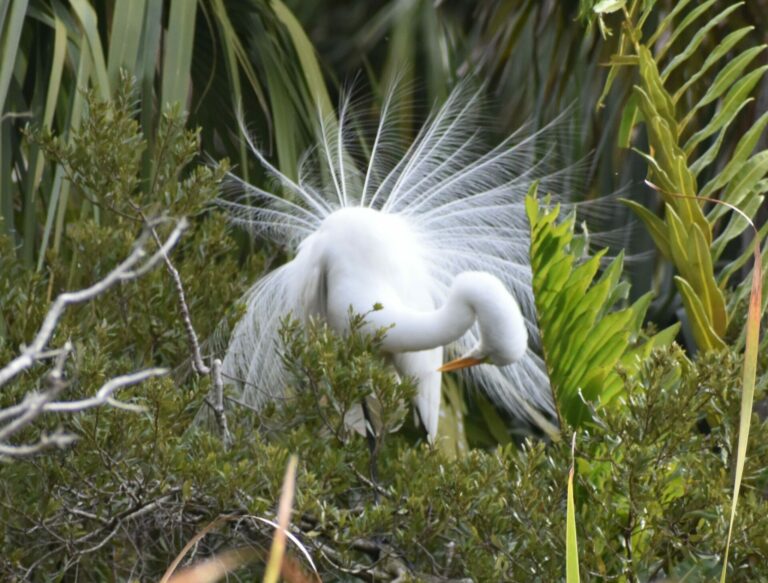
For birds nesting at the rookery, nesting season starts in January. This Great Egret was in full display mode to impress its mate. The boardwalk passes quite close to the rookery and there is quite a din when the baby birds arrive later in the spring. All sorts of herons, egrets are present as well as Anhinga, Double-crested cormorants, wood storks, and …
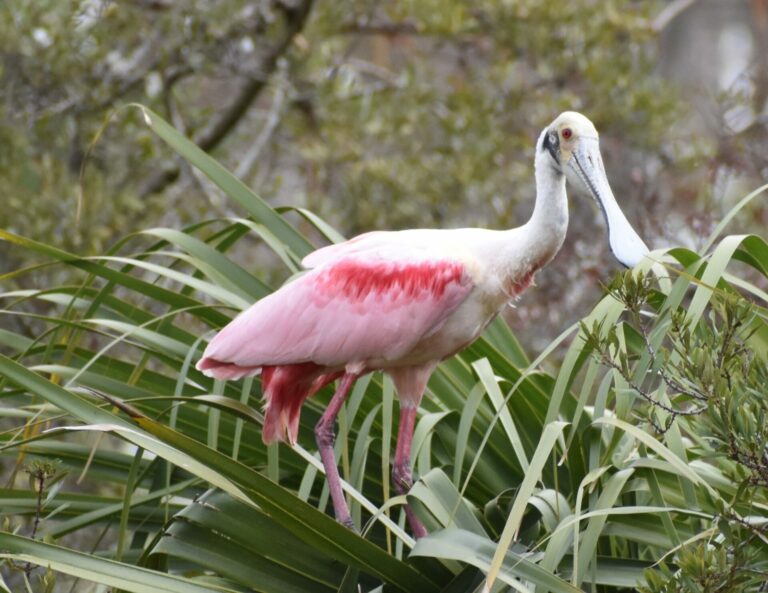
lots of roseate spoonbills! The spoonbills nest in palm trees within about twenty feet of the boardwalk, so it is ridiculously easy to get good pictures of them.
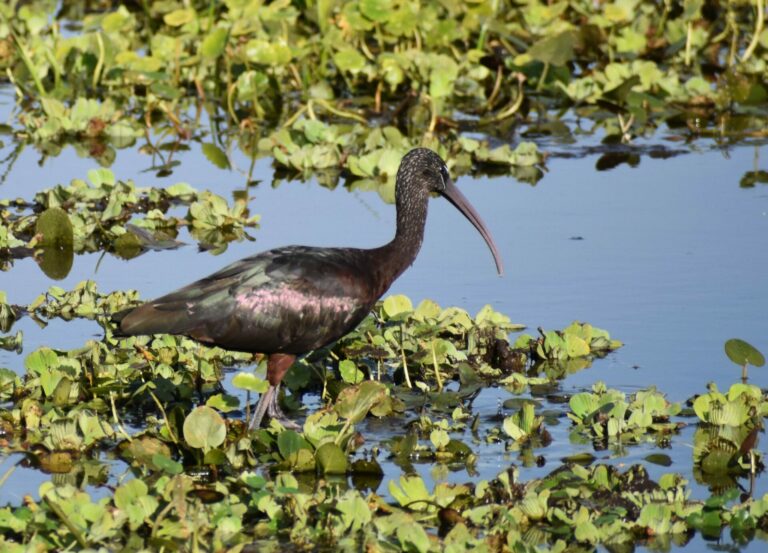
When my wife first saw a glossy ibis on an overcast day in the distance, she assumed it was another poorly named bird. But in the right lighting and closer, we both agree that the name is quite fitting.

eclare
Gorgeous photos! Wetlands are wonderful, good to hear the ARP is helping the other one.
mrmoshpotato
Sneaky buggers!
Princess
I love coots. They have weird feet. I once saw one walk up an almost-verticals tree in Oxford.
Winter Wren
@Princess: Yes, they have long partially webbed feet. Often you can see them here walking through some of the underwater vegetation – the water is very clear generally.
OzarkHillbilly
When I was up on Lake of the Woods, we called coots “fish ducks.” Not sure what they call them now. Probably something like “horrible to eat.”
Thanx for the pics Winter Wren.
Betty
Lovely pictures.
Albatrossity
@OzarkHillbilly: Here in Kansas we call coots “Missouri Mallards”…
These are great pics. I dunno when I will visit Florida next, but I will make a point of stopping by this wetland if that ever comes about!
Anyway
Great pictures! Love the color commentary :D
dybevick
@watergirl
Check out Sweetwater Wetlands Park just a bit north.
Bonus fact, when viewed from the air the trail system sketches out a gator head.
https://www.gainesvillefl.gov/Parks/Sweetwater-Wetlands-Park
Winter Wren
@dybevick: Nice – will need to check that out when we can get up that way.
stinger
I had the same question as your wife about the first pic, so when I saw the second pic and caption, I laughed out loud! Great pics all — thanks!
cope
Having moved out of FL after 33 years there, your pictures remind me of some of the good things about the state. We only got out to this particular wetland park once because we had other, smaller places nearer our home but that one time was wonderful.
Thanks.
way2blue
Winter Wren. Your photos are great. My favorite is the plump bittern hiding behind the slender reed. Ha! Thanks for sharing.
Chris T.
@mrmoshpotato:
A bitter biting bittern bit a better brother bittern
And the better brother bittern bit the bitter biter back.
The bitter bittern, bitten by the better brother bittern,
Said: “I’m a bitter biter bit! Alas!”
(from The Sixth Sick Sheik’s Sixth Sheep’s Sick collection…)